Fl Studio How to Make a Sample Stop When Playing It Again
And then you want some tips & tricks for FL Studio? Have you learned the basics and don't know where to get next?
Sometimes you lot just need a large list of creative tips to try out. Considering as producers, we frequently don't know what we don't know.
There's no catch to this article – no fancy business. Just a large bunch of tips.
We've broken them down into a few sections for clarity: General, Browser, Aqueduct Rack, Pianoforte Roll, Playlist, and Mixer Tips.
Let's delve into them.
Get the headstart y'all need in music production with our EDM Starter Kit
Get our collection of high-quality presets, samples and PDF guides – suitable for all genres of electronic music.
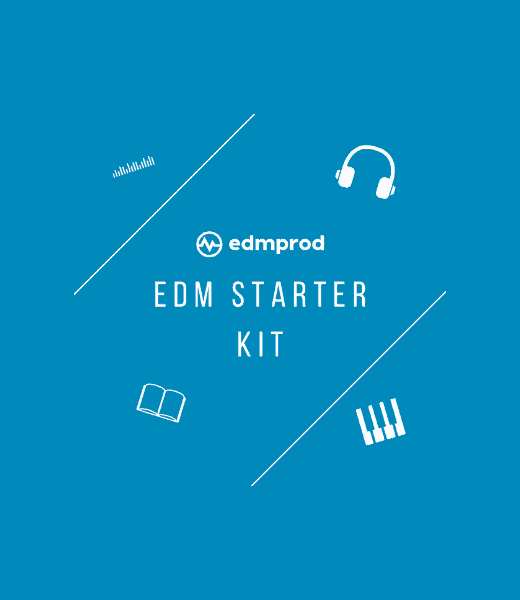
General Tips
These are tips that employ at a programme-wide level, or are applicable to all of the different sections in FL Studio.
Tip one: Detached
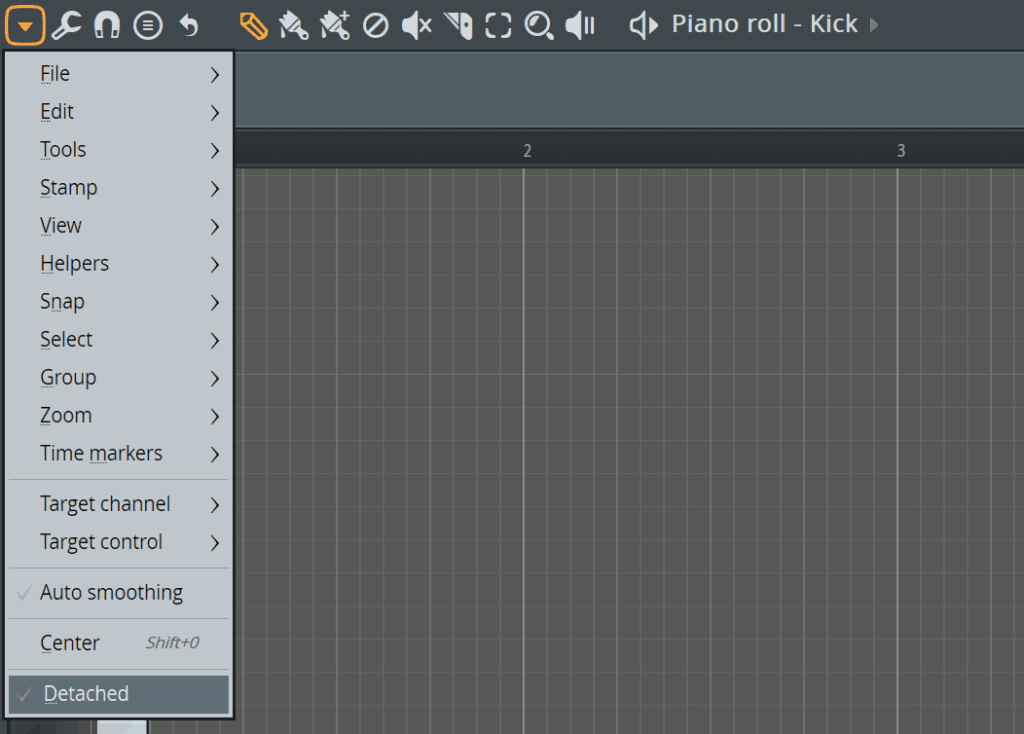
Ill of the different windows being hidden by other ones? Get up to the left corner and click on the menu > Detached. Now your window volition always stay on top. (Note: You tin detach all plugins past default by going to the General settings, navigating to the Misc. section and selecting Disassemble all plugins.
Tip 2: Relieve New Version
Press Shift + Cmd (Ctrl) + S to save a new version. This is helpful to try different things without losing the original version, so experiment away and endeavour things you might not typically do.
Tip 3: Fine Adjustments
Use Cmd (Ctrl on Windows) to finetune whatsoever parameter when adjusting. Now you can get super precise with your controls and get the perfect mix.
Tip iv: Hint Panel
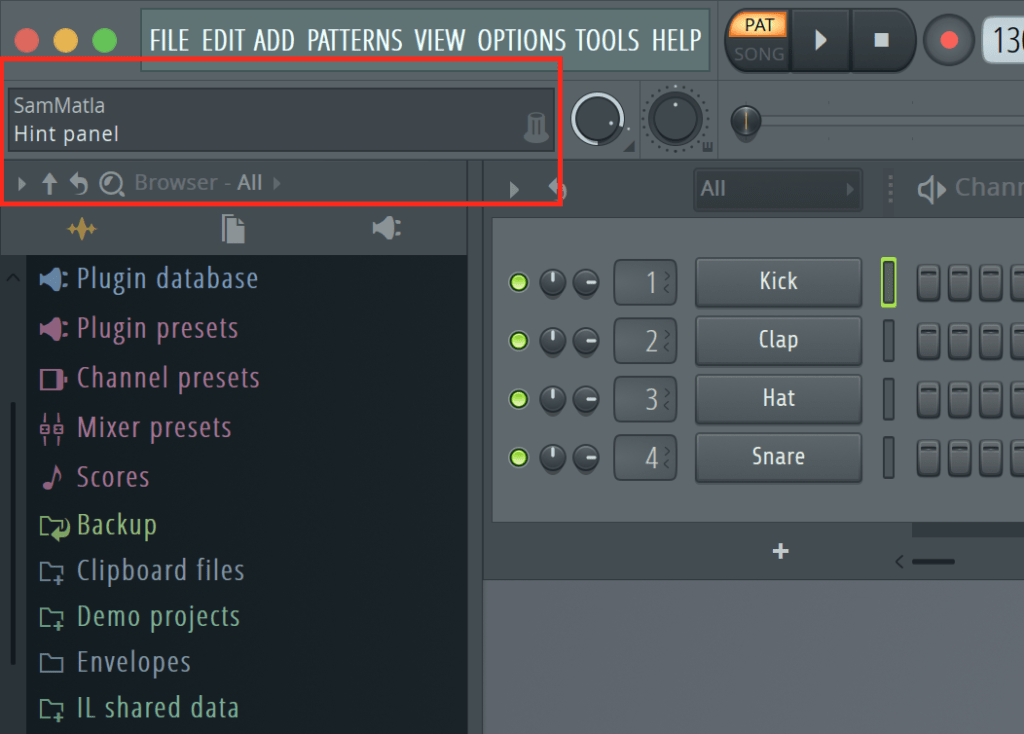
The Hint Panel in the pinnacle left is a bang-up way to come across what you're doing. Simply hover over a control or characteristic and it will describe information technology for you. If you don't empathise anything, e'er give that a read first. It also tells you any shortcuts for the control you're hovering over.
Tip 5: Hint Bar
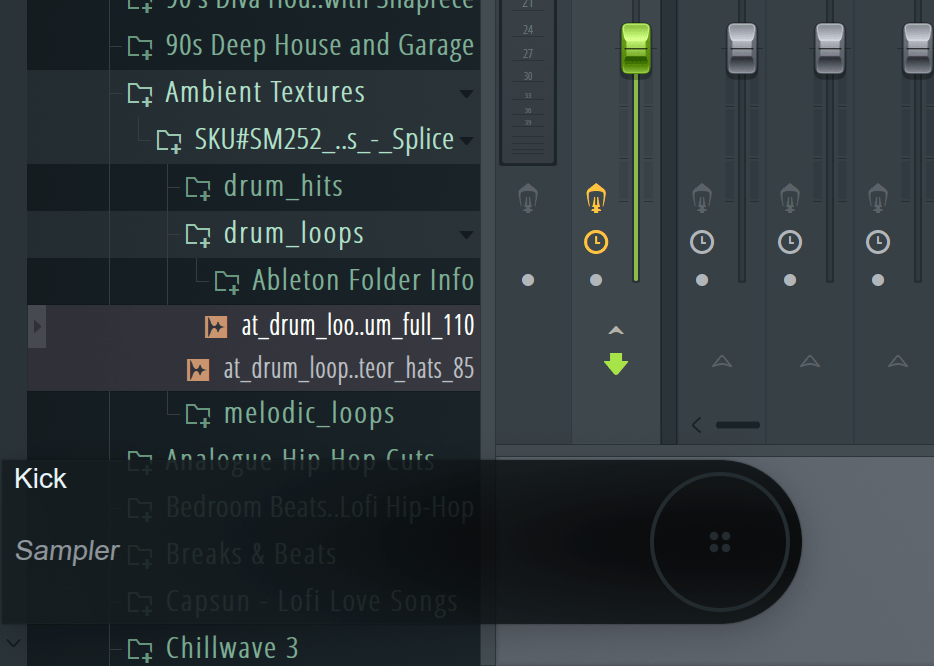
You can take the previous tip one stride further and actuate the Hint Bar past correct-clicking on the panel and selecting Hint bar. At present you have a movable transparent window which is a lot easier to run across.
Tip half dozen: Tap Tempo
Right-click on the tempo to use the 'Tap' office. This mode, you can tap the tempo in at the desired rate.
Tip 7: Spectrogram

Change the Oscilloscope upwardly the top into a Spectrogram by right-clicking and selecting it. It's a great mode to see the entire range of frequencies your rail is taking up, at a glance.
Tip 8: Fourth dimension Counter
Change the Bar counter at the top into a Minute counter by correct-clicking and selecting Minute : Second : Centisecond. Bang-up manner to check the duration of your track so far.
Tip 9: Time Elapsed in Project

Notice the time spent in a particular project past pressing F11 or past navigating to the Options Menu and selecting Project Info. It tin can be eye-opening to meet how long yous've worked on a project sometimes.
Tip ten: Master Pitch

Change the entire pitch of your rail by irresolute the master pitch knob next to the main book knob near the hint panel. Save yourself from going into every MIDI prune and adjusting the notes up or down whatsoever number of semitones.
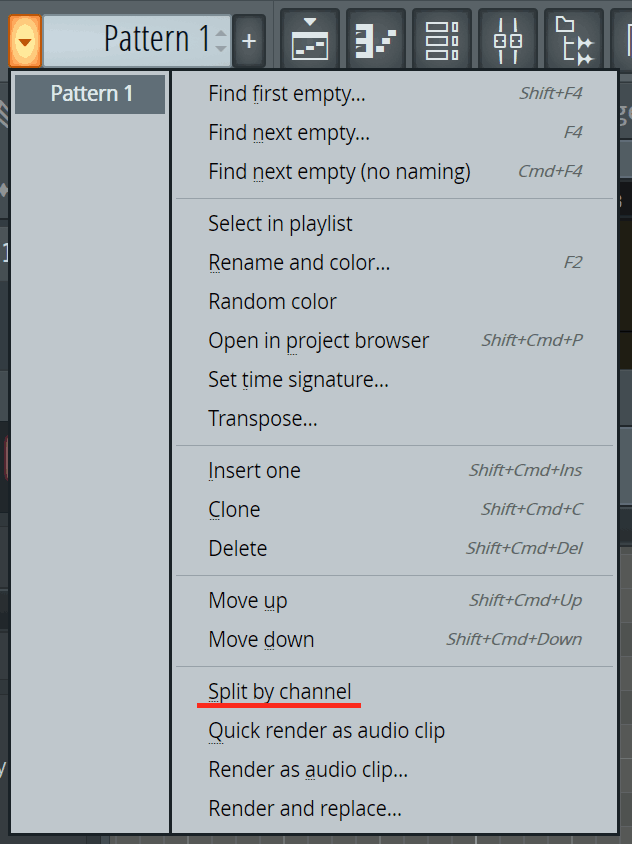
Tip eleven: Split by Aqueduct
Yous tin can split all the dissimilar instruments and sounds in the Channel Rack into their ain patterns by clicking the pattern options and selecting Split up by Channel.
Tip 12: Colour/Icon
Add together an icon and/or colour to any channel or runway by right-clicking and selecting Change colour or Modify icon.
Tip 13: Groundwork
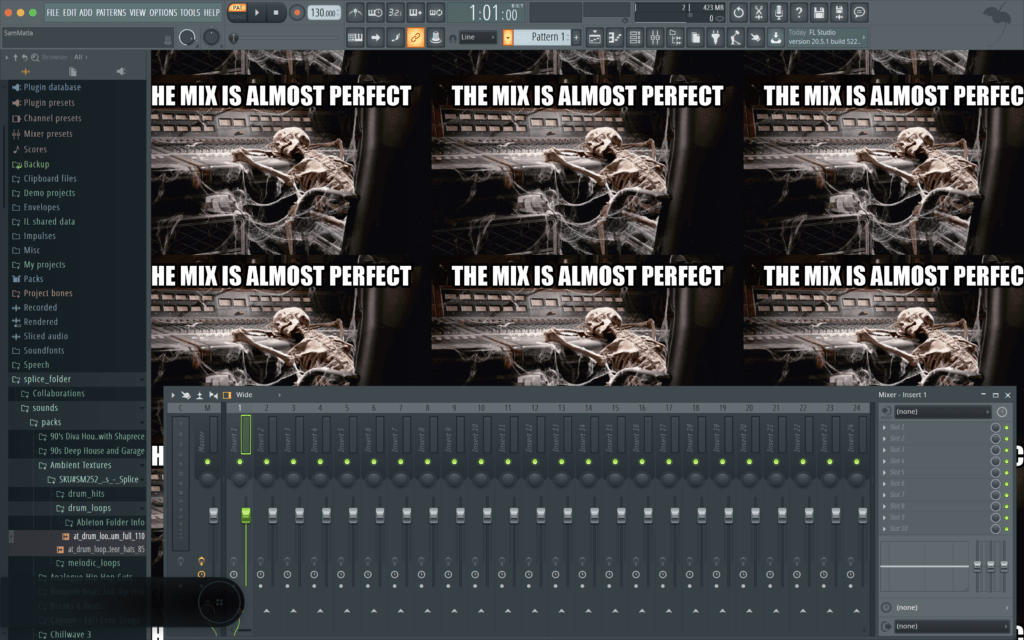
Change the background image or colour by clicking on View > Background. This helps to requite your workspace a fresh wait when things are seeming stagnant.
Tip 14: Zoom
Right-click and elevate up/down on the scrollbar to zoom in/out any of the windows. Uncomplicated but helpful.
Tip 15: Metronome Audio
Correct-click on the Metronome to customise the metronome sound. You can choose betwixt a hi-hat, a tick (default), a beep and a cowbell.
Tip 16: Plugin Picker
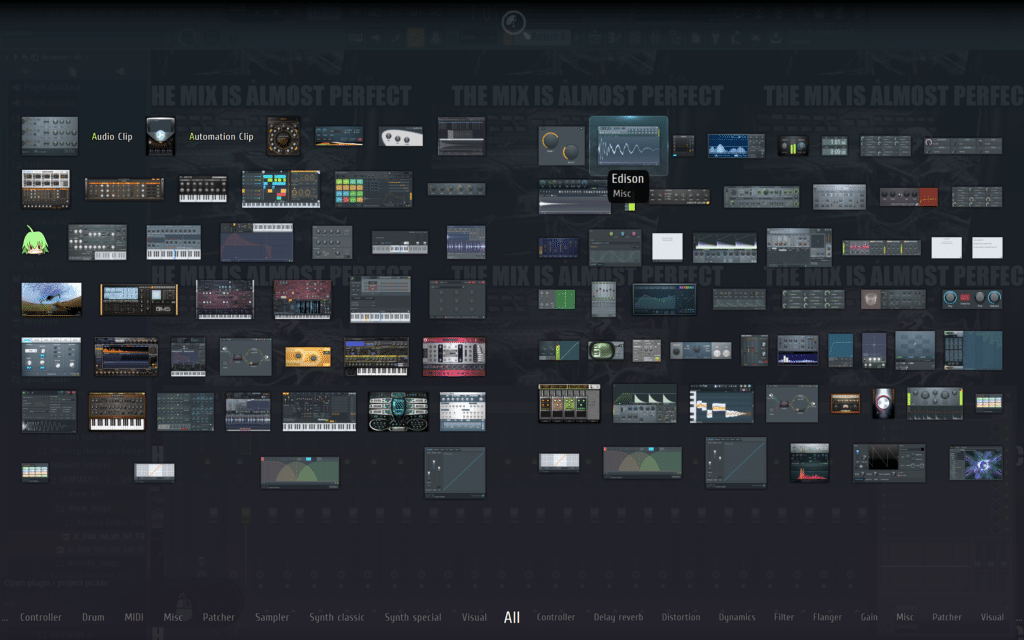
Printing F8 to bring upwards the plugin picker. This is a great fashion to visualise what plugins y'all have and makes it like shooting fish in a barrel to select what you want to utilize.
Tip 17: Function Buttons
Speaking of the F buttons, F5 brings upward the Playlist, F6 brings up the Channel Rack/Step Sequencer, F7 brings up the Piano Gyre, F8 brings up the Browser and F9 brings upwards the Mixer. These shortcuts volition help you access the near-used sections of FL Studio quickly.
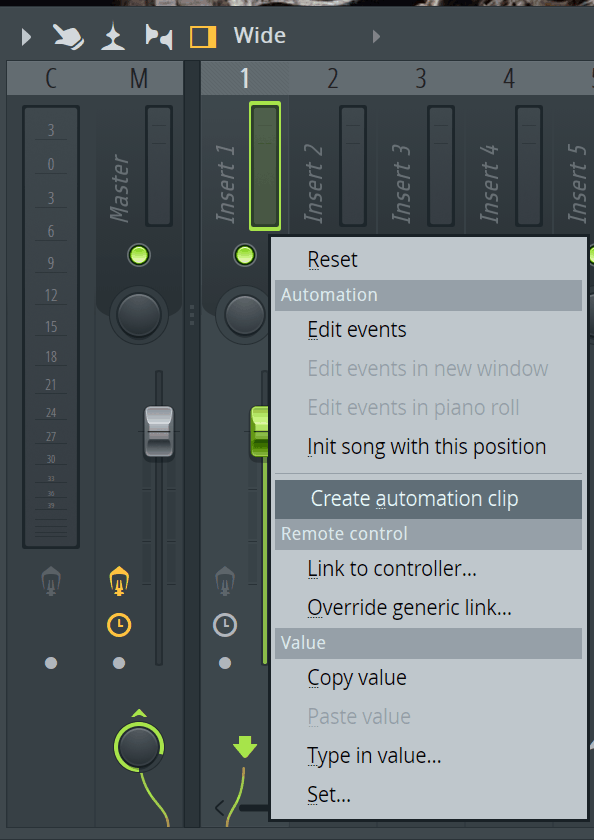
Tip 18: Automation Clips
Want to automate something? Correct-click on a control anywhere in FL Studio and select Create automation prune. This will create a new automation clip in Playlist that you tin can adjust.
Tip nineteen: Tertiary-Party Automation Clips
If y'all are trying to tweak a third-party plugin'south parameter, y'all'll observe it doesn't show up with the option to create a new prune when right-clicking. In this example, adjust the parameter and navigate to the main menu and select Tools > Last Tweaked > Create automation clip. This gets around the lack of functionality.
Tip 20: Calculator Keyboard MIDI
Wish you had a MIDI keyboard? At present you lot do. Printing Cmd + T and you tin can use the computer keyboard to jam notes over two octaves.
Z is C4, Q is C5.
Tip 21: Quick Rename
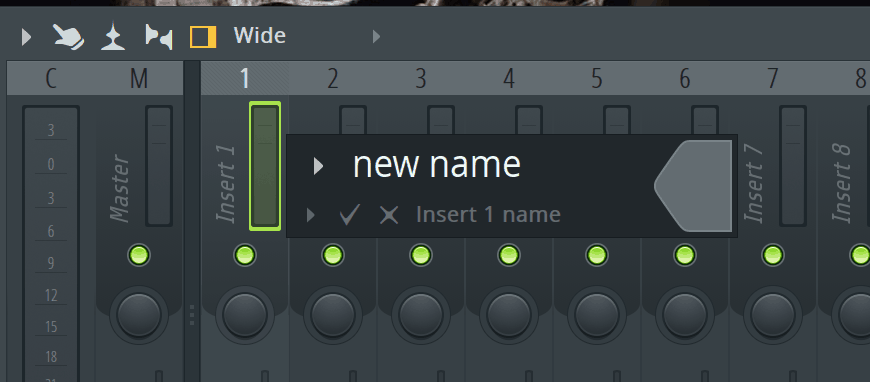
Shift-click to rename anything, whether it'due south a mixer track, playlist rail or channel. No more right-clicking.
Tip 22: Lock Active
When y'all solo something, everything gets muted. Only what if at that place is something you want to remain on all the time, even when soloing something else? Shift-click on the green LED of any track to lock information technology. Now it will remain on until y'all manually disable it.
Tip 23: Stop Audio
Nix's worse than stopping your rail playing and having a giant reverb tail follow it. To stop such occurrences, printing Cmd (Ctrl) + H, and all the sound volition terminate.
Tip 24: Realign Windows
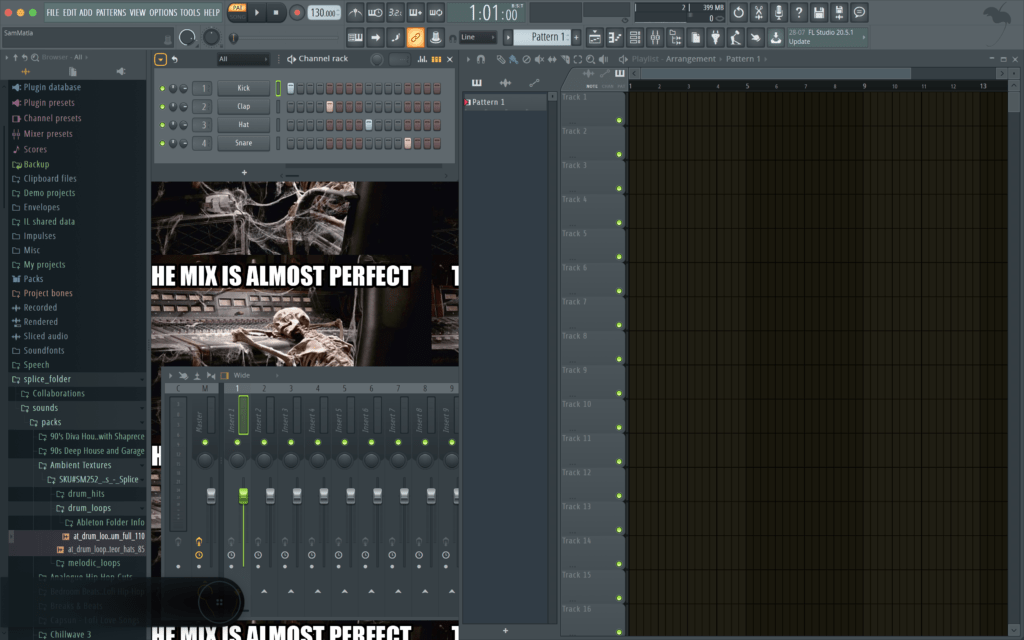
A quick Shift + Cmd (Ctrl) + H will arrange your windows back to the default position. This is great to clean upwards any mess yous may have.
Tip 25: Vocal Position
If you want to speedily bound around you arrangement or pattern (depending on the playback fashion), then utilise the vocal position slider in the top toolbar. Corking for scanning through what you're listening to.
Tip 26: Auto Scrolling
If y'all want the playhead to follow along with the song or design, click that arrow in the toolbar at the summit to enable Machine Scrolling. Now the display with follow wherever the playhead goes.
Tip 27: Zipped Loop Package
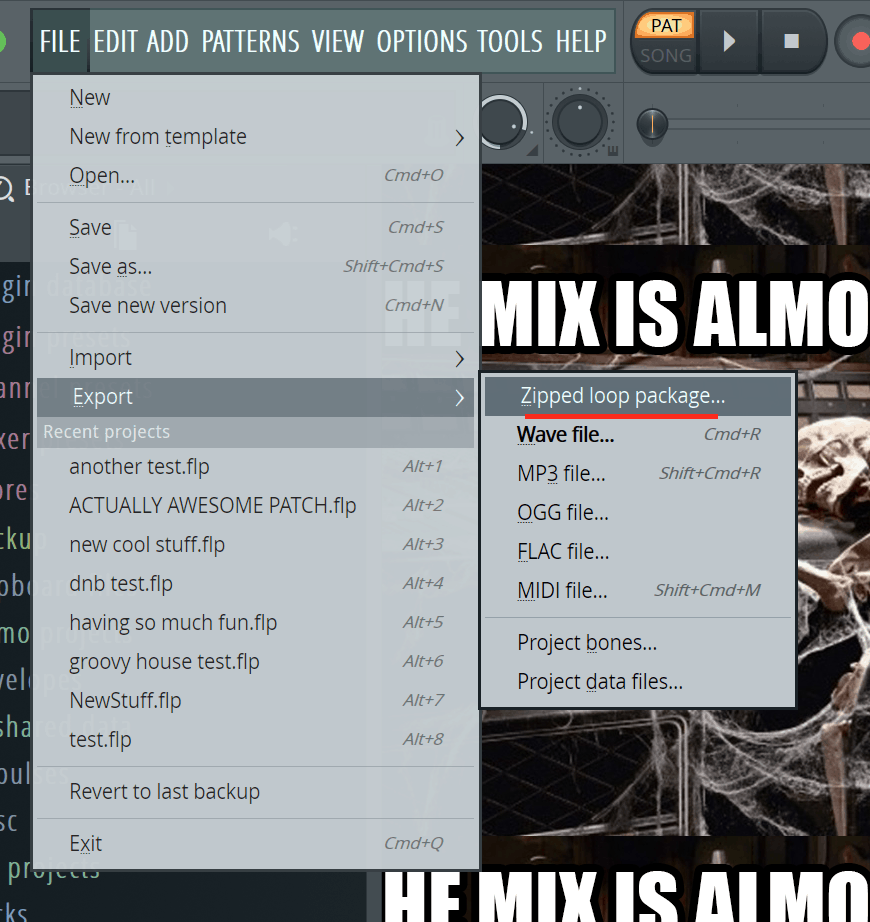
Always worked on a collab with your producer friends, but have experienced the detestable headache of lost files?
What if I told y'all that you lot tin can transport everything that y'all need in one folder? Head up to the main menu and printing File > Consign > Zipped Loop Packet. Any files that aren't included with FL, will now be included in a nice .zippo file to send.
Note that this won't save plugin instances – they will need to download or buy them separately.
Recommended: A Roundup of 50 Music Production Tips from Twitter
Browser Tips
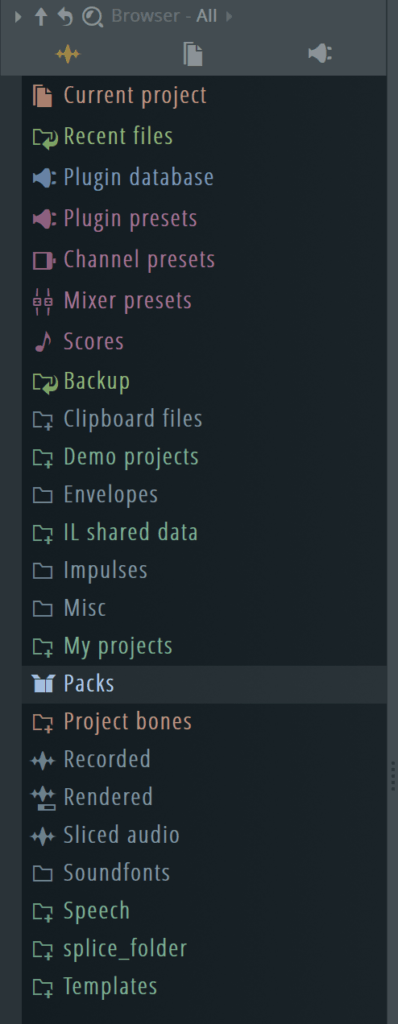
FL Studio's Browser is extremely powerful. Here are a few pointers to speed upward your workflow and encourage new ideas.
Tip 28: Expand/Collapse All
Right-click on the browser to aggrandize all the folders or plummet all if there are some open. This can assist to explore or clean up the browser.
Tip 29: Arrow Keys
Use the up and down arrow keys to navigate through sounds. Use the right pointer key to play the currently-selected sound back.
Tip 30: Import Methods
Right click on an audio file to open it straight into a Slicex, Fruity Granulizer, Sampler or Fruity Slicer. Clicking and dragging will create a sampler.
Tip 31: Browser Snapshots
Press a number from one-9 to select a snapshot of the browser. Press the currently selected number again to save the electric current state of the browser to that snapshot. This allows for faster navigation of usually-used areas in the browser.
Tip 32: Search
Press Cmd (Ctrl) + F to find a file in the browser. No more than navigating for VEC Kicking 005.
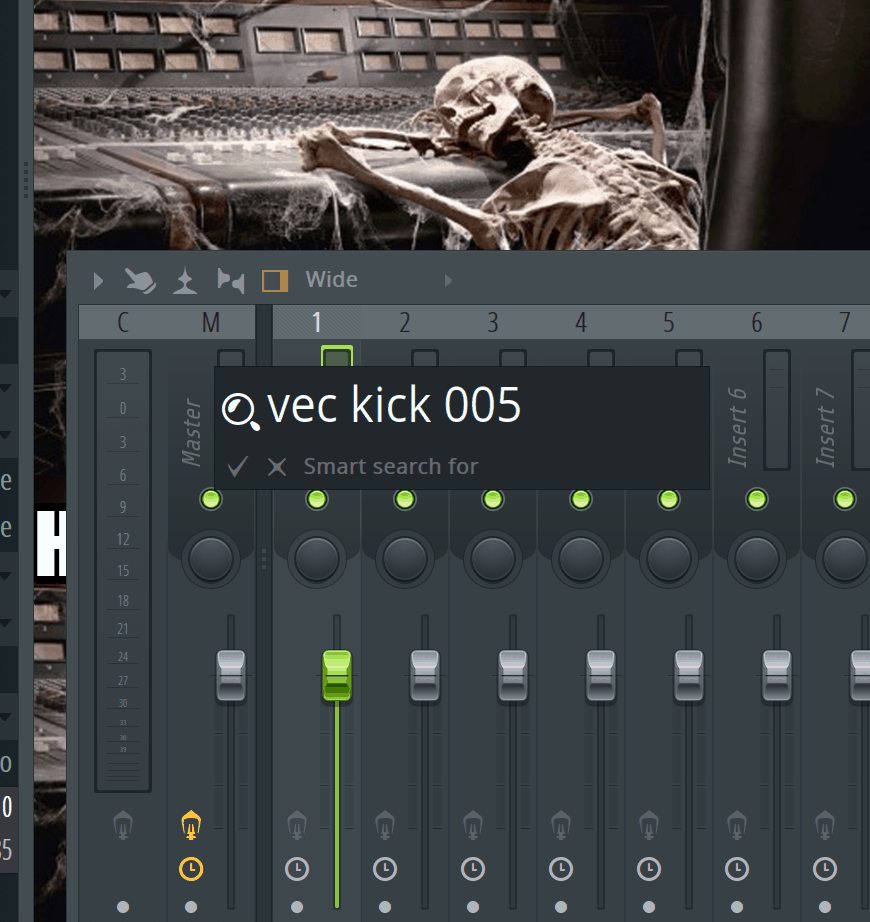
Tip 33: Hide Browser
Hide the browser past dragging the right side of the window all the mode to the left. Pull it back out to the correct to prove it again.
Tip 34: Browser Docking
The browser tin be moved around easily past clicking and dragging. In doing and so, information technology will snap to the side of the screen yous prefer it on.
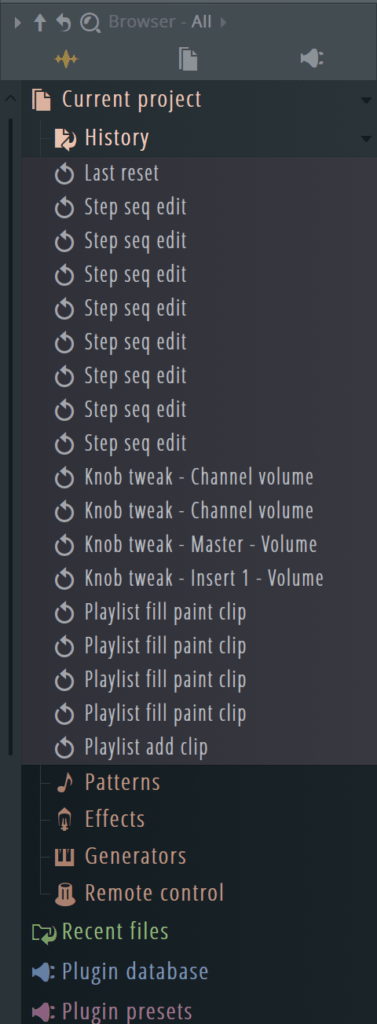
Tip 35: Pattern/Song
Utilise L to quickly switch between Pattern and Song playback modes. Some other one you'll be using a lot in the future.
Tip 36: Disengage History
Navigate to Current Projection > History to encounter all of the actions performed in the project. Click on a previous one to automatically undo all deportment between them.
Tip 37: Autosaved Backups
Terminal tip didn't practice the trick? Want to move back to a much older version of your runway but forgot to save? Simply press Backup and select the relevant autosave of your project. All the mixing mistakes your made are suddenly gone.
Tip 38: Add New Folders
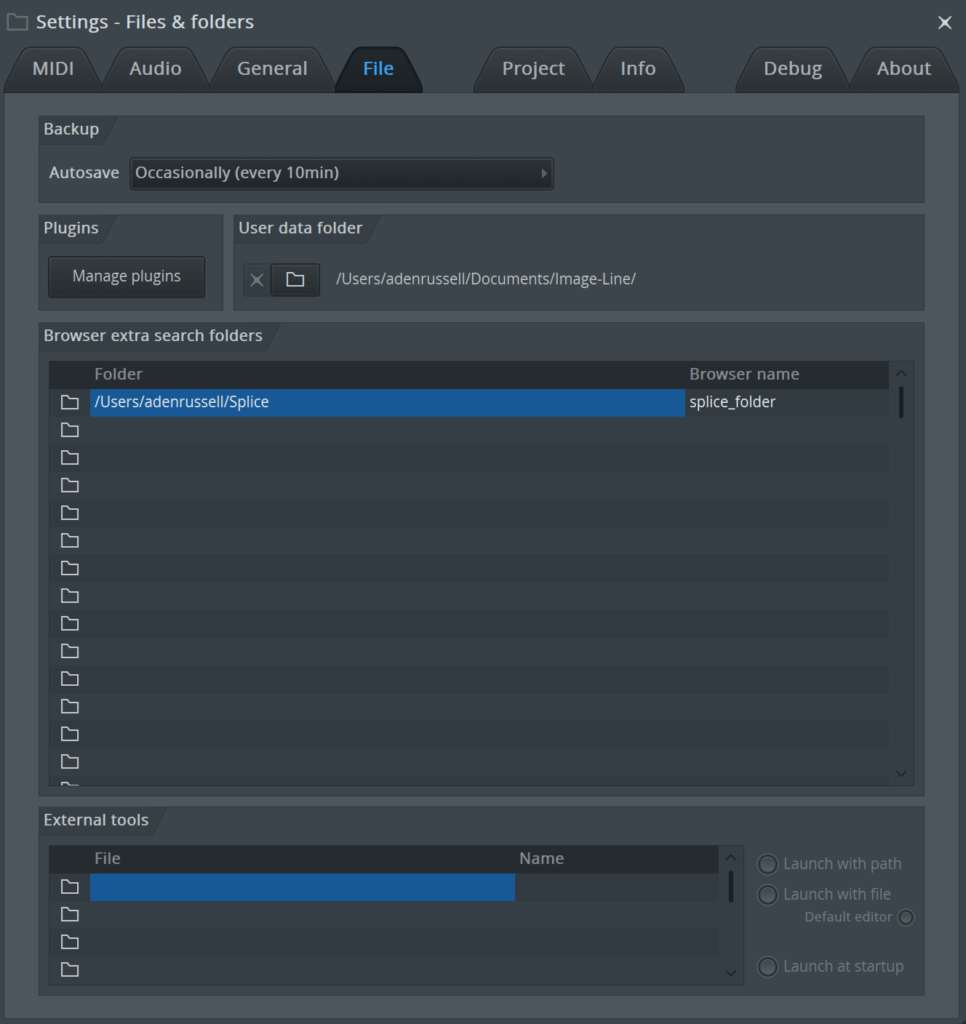
If you lot want to add together some new sounds and samples in, you'll desire to navigate to the Options > File Settings carte du jour. Hither yous can add new folders in the binder listing, and they volition subsequently show in the browser.
Tip 39: Add To Channel While Browsing
Simply hold shift to add the sample to the selected track in the Aqueduct Rack while browsing. This functions like a 'hot swap' function and allows you to audition unlike samples in place of another.
Tip 40: Scores
You tin can add pre-fix MIDI clips from the browser to any instrument on the Channel rack. They are under the 'Scores' folder, but yous can besides use third-party MIDI clips from online, or ones y'all take exported.
Tip 41: Plugin, Channel and Mixer Presets
Another profoundly-utilitarian resource in FL's browser is the aforementioned presets. There are three respective folders towards the top, each with some great default options to play around with.
Channel Rack Tips
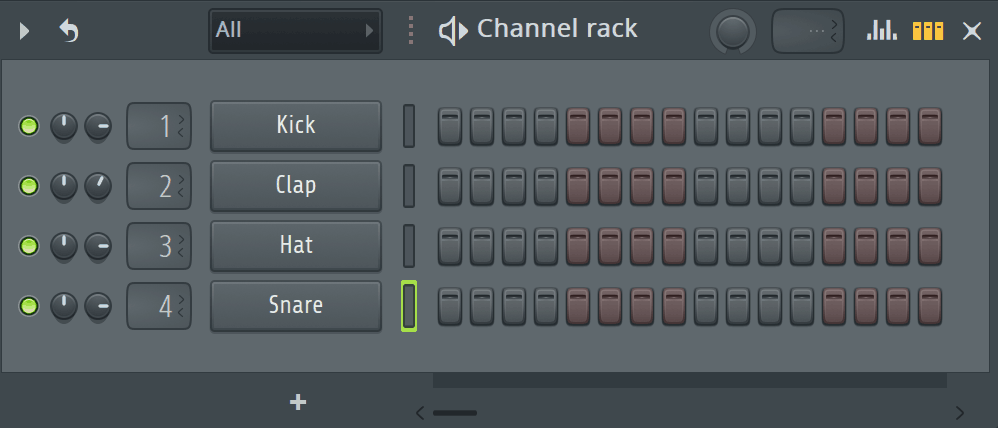
For a lot of producers, most creative work happens in the Channel Rack. It's the cornerstone of FL Studio. And then here are some useful tricks you tin use in your next production session.
Tip 42: Purge Unused Audio Clips
Got some unused audio clips you lot removed from the arrangement? Click Tools > Macros > Purge unused sound clips. This will automatically delete all clips from the channel rack that weren't being used and will clear upwards space.
Tip 43: Fill Steps
Right click on a aqueduct and select Fill each ii, 4 or 8 steps to automatically fill up those rhythmic intervals without clicking and moving the mouse.
Tip 44: Zip/Unzip a Channel
Press Alt + Z to zip a channel. This hides it so the proper name isn't shown. To unzip channels, press Alt + U.
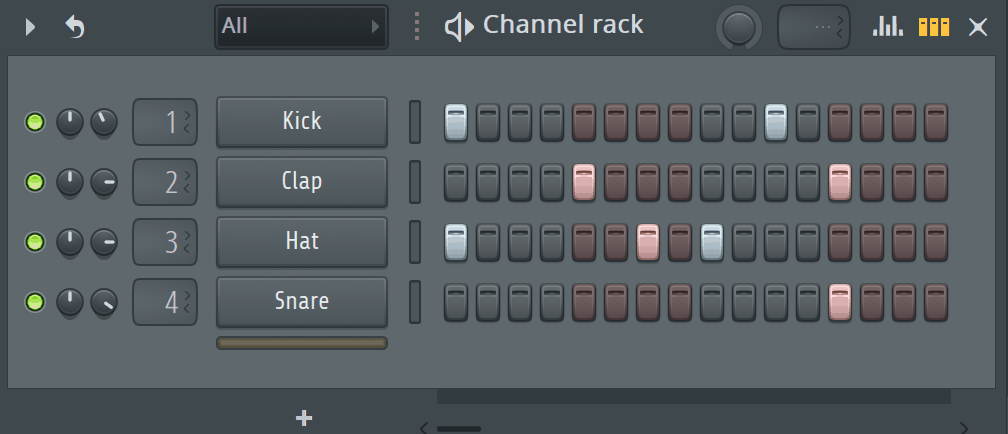
Tip 45: Cut Itself
If you want notes to stop playing when another note is playing in the step sequencer, right click on the channel and select 'Cut itself'. This tin assistance to clean upward sounds that might be overlapping and creating mud in your tracks.
Tip 46: Relieve Channel State
Save a channel's state, whether a native or tertiary-political party plugin, by navigating to the menu in the top left of the window and selecting 'Salve aqueduct state as'. This saves presets for your instruments and effects right within FL Studio, and puts them in the browser.
Tip 47: Reverse
In the sampler, you can reverse sounds by navigating to the Precomputed effects department and by enabling Reverse. This can reach some interesting sounds depending on the source material.
Tip 48: Fourth dimension Stretching
Also in the sampler, you can experiment with time stretching by adjusting the mode, pitch shift and time stretch controls. This is a creative way to mangle audio right inside the sampler instead of loading up an Edison case.
Tip 49: Graph Editor
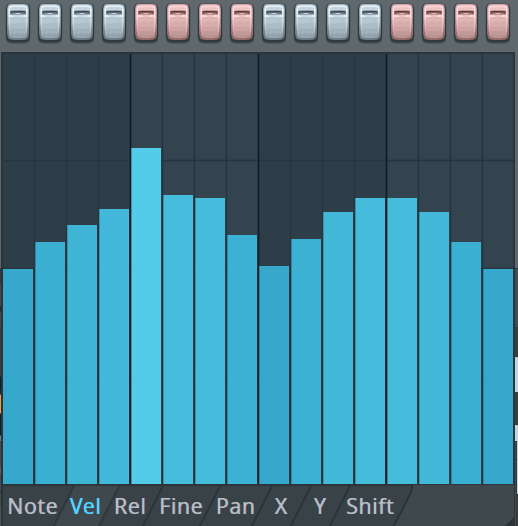
Use the Graph Editor by clicking on the graph icon in the height correct of the Channel Rack. Hither you can arrange velocity, pitch, pan, note values and much more right from the step sequencer – without having to open the Piano Roll.
Tip 50: Master Swing
You can easily add an amount of swing to your patterns past dialing in the swing knob. This adds more of a smashing feel to the rhythm and works nifty in genres like house, garage and hip-hop.
Tip 51: Reorder Channels
Utilize Alt + Upwards/Down to move the selected channel up or downwards in the order. A good use of this is to motion less of import elements to the bottom if they are taking upward space.
Tip 52: Lock to Keyboard
Sometimes you just want a item sound to be e'er playable on your keyboard, regardless of what is selected. Maybe a piano to bank check the key of things, or simply to jam over the top of something.
Regardless, y'all can lock a certain channel to the keyboard by right clicking and selecting Recieve notes from > Typing keyboard. The computer keyboard will ever play that rails, until y'all go back to the bill of fare and select unlock. Really neat.
Tip 53: Sampler Envelopes
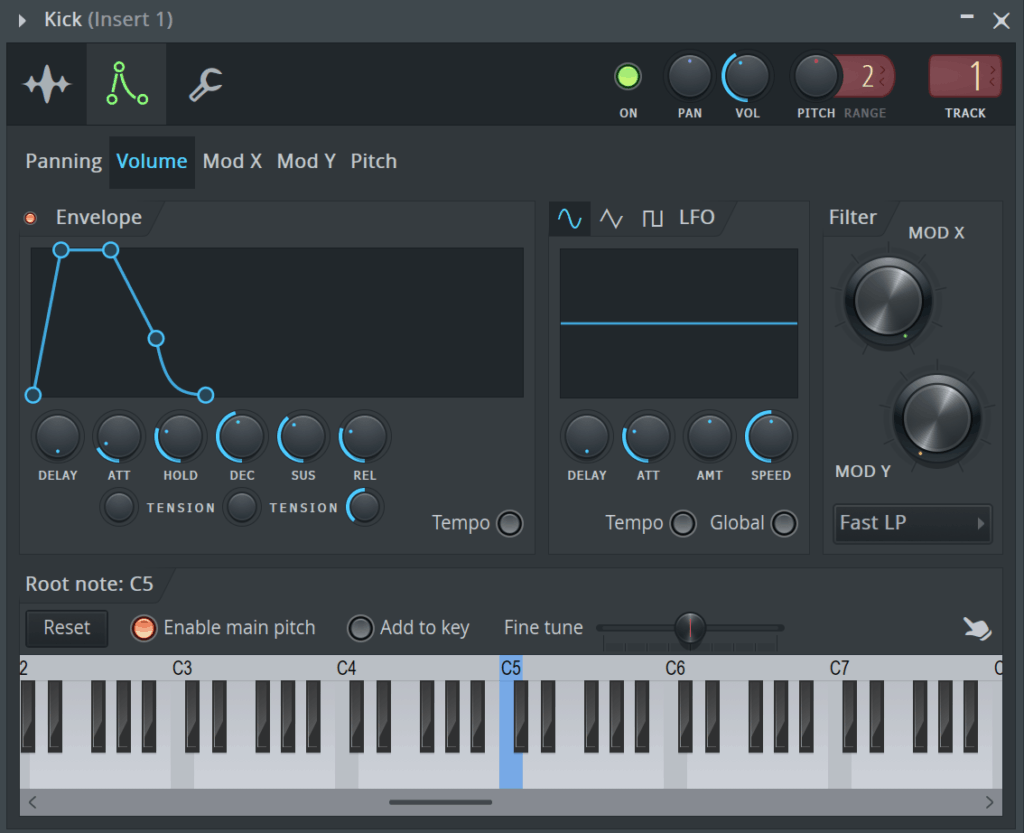
I'll be honest, I learned this tip way also late.
When you load up a sample into a sampler channel, up the top there is an envelope icon. Here, yous can activate the envelope for a variety of parameters: Volume, Panning, Pitch and Filter/Mod.
Tip 54: Adjacent/Previous Design
Desire to move between patterns using just the keyboard. Simply printing Shift + Cmd (Ctrl) + Upward/Down to navigate between them. If there is no next pattern, it will create a new one automatically.
Tip 55: Quick Render
If you've got a design, and you only want to whole thing to exist bounced to an audio file, head upwardly to the main menu and click Patterns > Quick render as sound file. This will bounce it into the Audio department of the Channel rack, and you can paste it direct into the Playlist.
Tip 56: Fruity Dance
If you demand a bit of entertainment in the studio, load up a Fruity Dance and yous'll run across a picayune avatar dance to your music equally you create it. Yeah, it doesn't directly aid you lot make music, but who cares, correct?
Tip 57: Using Layer
If y'all want to trigger multiple sounds from the same pattern, load upwards a Layer instrument.
Once you lot've washed that, select the two channels y'all want to layer and hit Ready children. Now any notes you add to that track will trigger both instruments. Piece of cake.
Tip 58: Fruity Granulizer
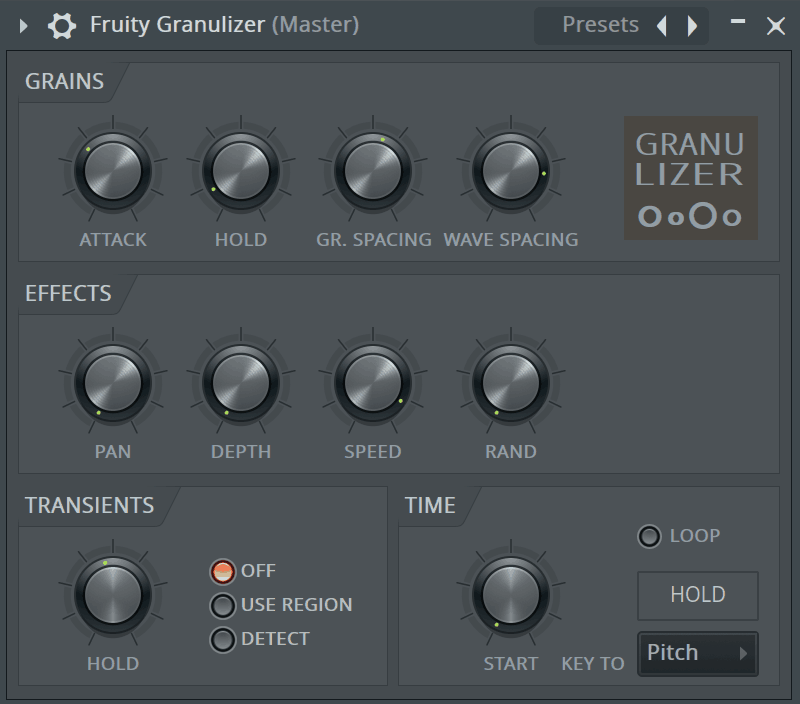
I'chiliad gonna mention Granulizer considering it's simply awesome. Y'all tin get some really unique sounds from this affair, no matter what genre you make. Just load upward an audio sample, tweak away and listen to the results. Y'all'll see what I mean.
Here's a cool instance.
Piano Coil Tips
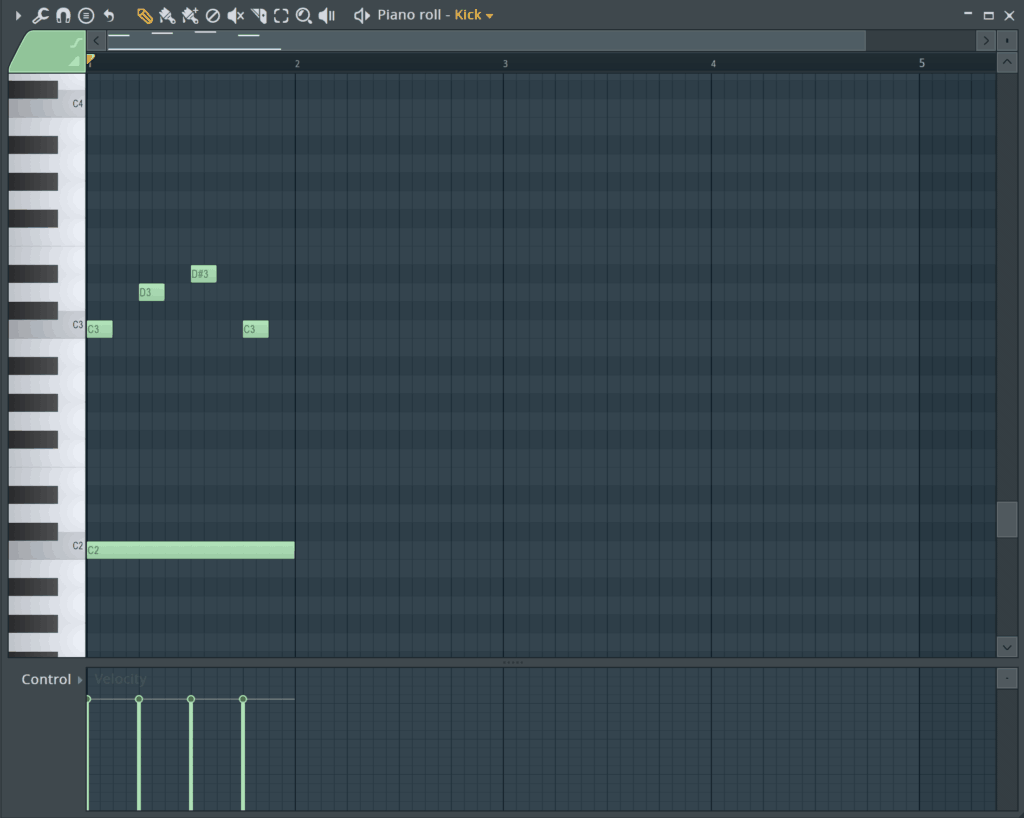
As part of the Channel Rack, the Piano Scroll is a very important tool. It'due south where chords are crafted, and where melodies are invented. It could be where you write the hook for your next large track – who knows?
And then it'southward important you know what y'all're doing here, so you don't get caught upward and lose whatever good ideas. Here are some tips to assist y'all understand it more than.
Tip 59: Riff Automobile
Stuck for artistic ideas? Press Alt + East to generate cool rhythmic patterns and new chord progressions using the Riff Machine. This is pretty unique features that most other DAWs don't have, and information technology gives you lot another choice for working with chords and melodies in a generative way.
Tip 60: Randomize
In the aforementioned menu is the Randomize feature which generates melodies – quick and dirty.
Tip 61: Filigree Color
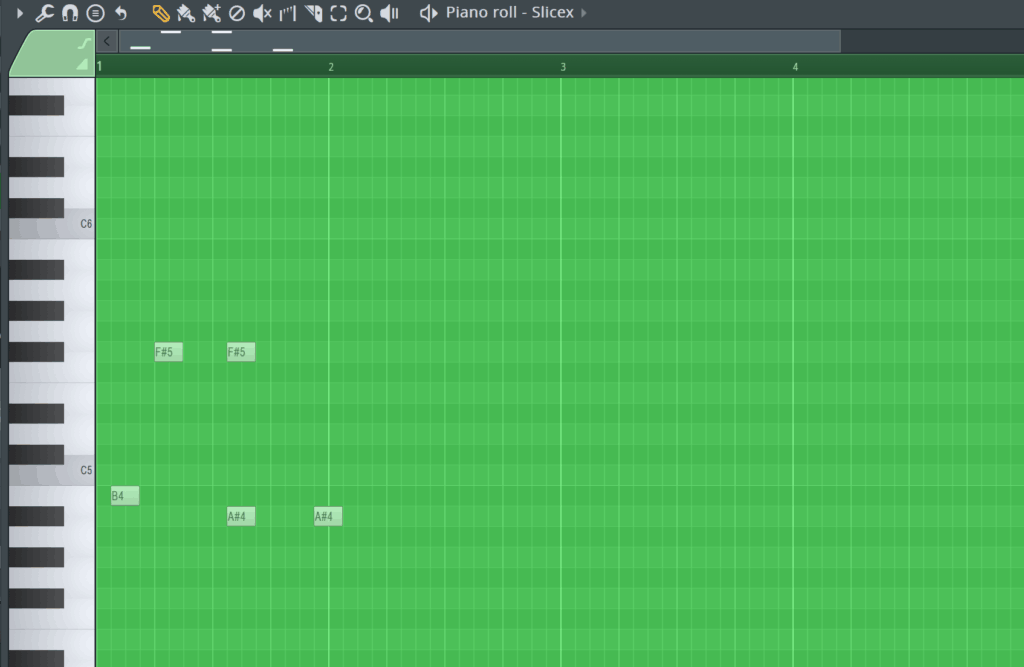
Don't like that bland, grey grid color? You can select any color by going to the Piano Roll menu, selecting View > Grid Colour or by pressing Cmd (Ctrl) + Alt + Thousand. At present your grid tin be blueish, regal or whatsoever color.
Tip 62: Playback Tool
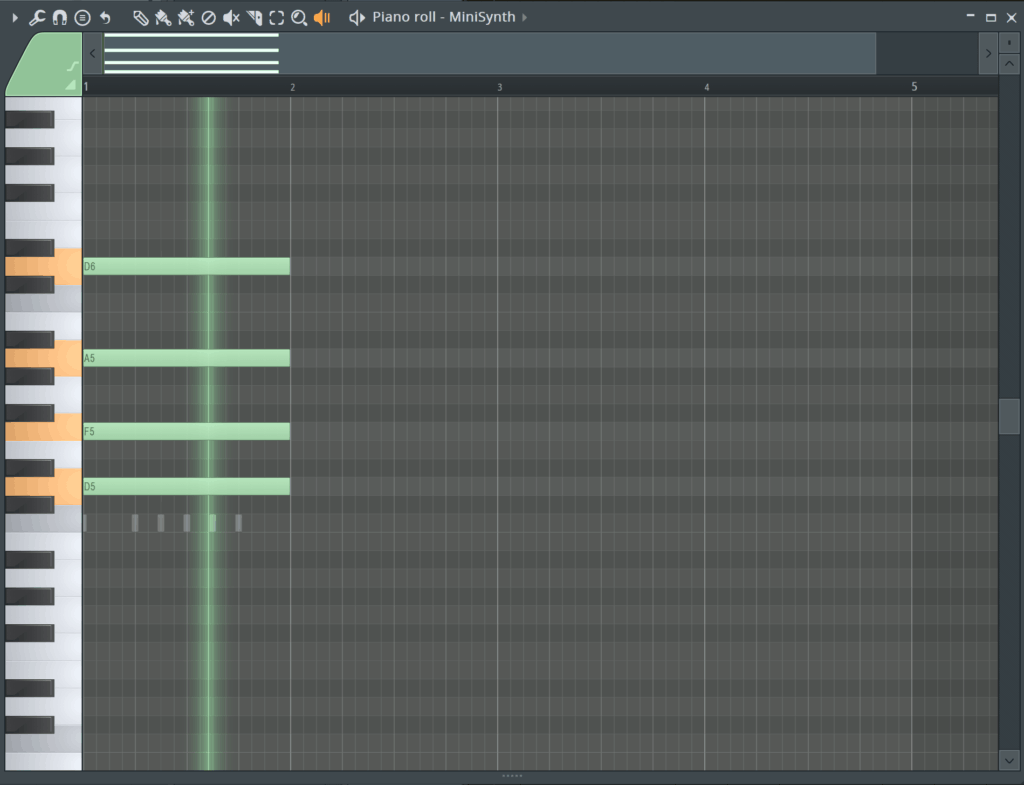
If you desire to hear what notes are going on at any given fourth dimension, use the Playback tool by selecting the Speaker/Pause icon or by pressing 'Y'. You'll be able to scrub through your MIDI and hear what notes are happening when.
Tip 63: Notation Scaling
If you select all the notes using Cmd (Ctrl) + A, a curl icon volition announced to the right of the selected notes. Move this around to stretch the timing of notes. By offsetting the timing in a poorly-warped sort of way, you lot can add a unique man feel to your sounds.
Tip 64: Stamps
The Stamp listing in the menu is a great mode to quickly drag in full chords without having to tediously draw in every note each fourth dimension. They're all listed there – major, small-scale, add6, sus2 and iv etc. Massive time saver.
Tip 65: Quick Delete
If y'all take the Draw tool selected, you can delete notes by right-clicking on them – without having to select the Delete tool.
Tip 66: Auto Smoothing
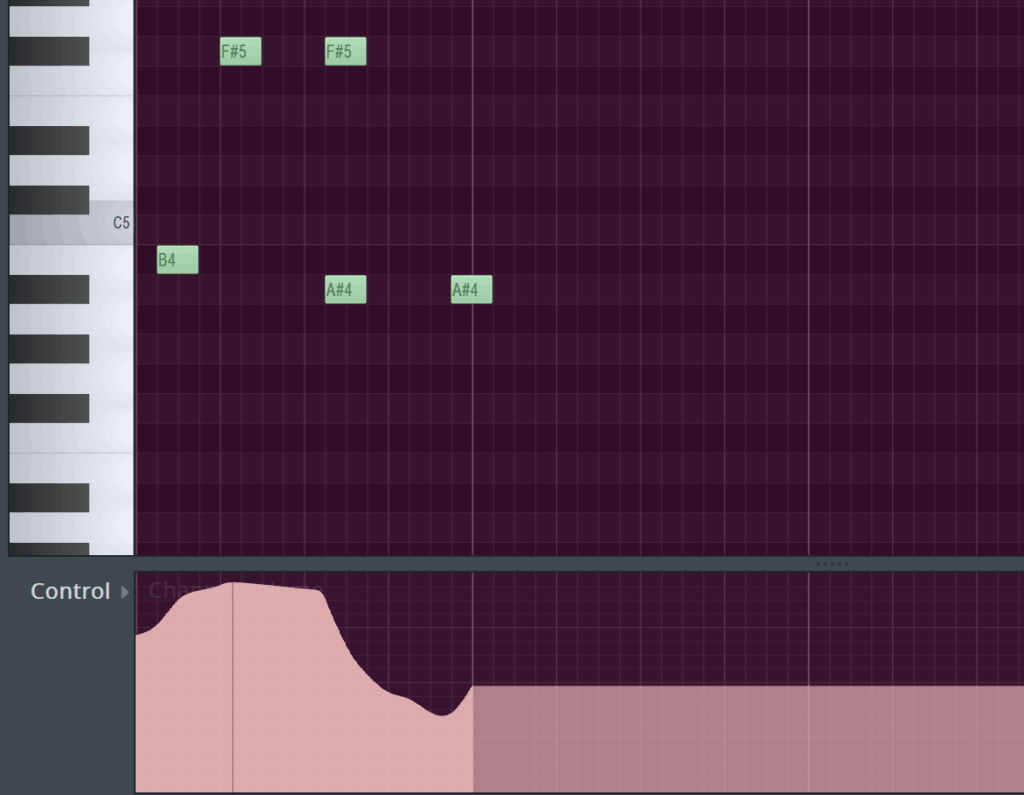
Added some modulation to your design in the Pianoforte Roll, but the automation lines are all jagged? Enable Auto Smoothing in the Piano Whorl carte du jour and your automation will become smoothen and curvy, rather than blocky.
Tip 67: Note Fine Adjustment
Just agree Shift + Scroll to move the note in line with the mouse cursor, left or right. Doing so can achieve a custom swing or human feel to the notes.
Tip 68: Scale Highlighting
Not the best with music theory and songwriting? Utilise the calibration highlighting in the card. Click Helpers > Scale Highlighting and cull the root note and the scale type. The background will calorie-free up the notes in that scale. Usually Major or Minor Natural (Aeolian) are all-time for almost music.
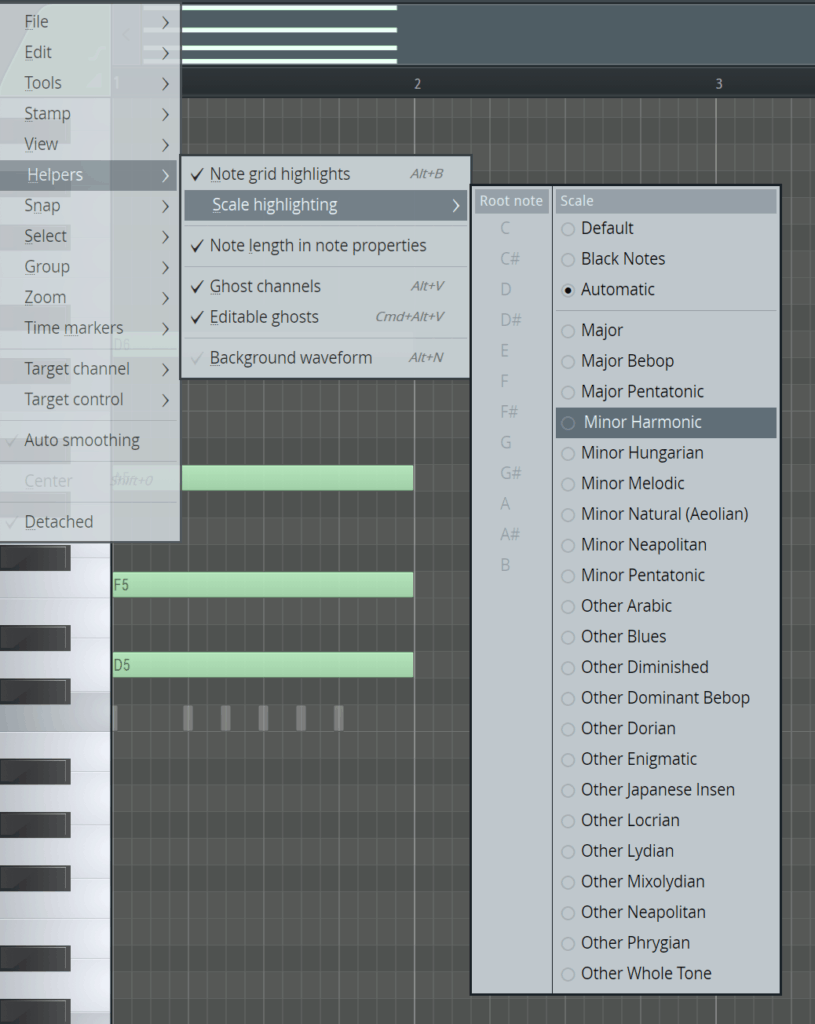
Tip 69: Octave Jump
Sometimes the notes yous've played or drawn in just don't sound practiced in that range and you need to change them. With notes selected, press Cmd (Ctrl) + Up/Downwards to motility the notes a whole octave up or downward.
Tip 70: Rotate Notes
If yous've got some notes looped in the Channel Rack, and desire to offset them all but desire them to wrap around the loop, select the notes and press Shift + Cmd (Ctrl) + Left/Right. This will move the notes, but they will appear at the start of the blueprint once they pass the finish.
You can likewise do this directly in the Aqueduct rack past selecting that aqueduct.
Tip 71: Import/Export MIDI
If you want to save some MIDI you've written, you tin hit the menu and get File > Export as MIDI file, or Import MIDI file if you want to load one upwardly. As mentioned earlier, yous tin also drag it in from the Browser.
Tip 72: Discard Lengths
With any annotation(s) selected, press Shift + D to truncate their lengths to the grid size.
Tip 73: Note Properties
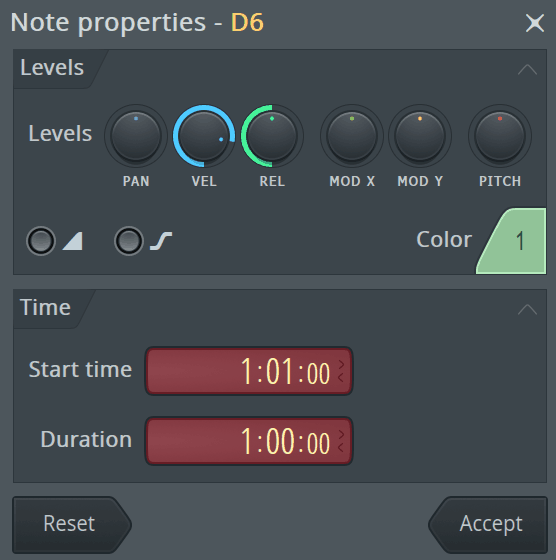
I matter I love well-nigh FL Studio is how technical you tin actually get. If you desire to run across the specific properties of each annotation, double click on it and it will bring up a window with all the controls on it, including length, colour, velocity and much more than.
Tip 74: Dump Score Log
Jammed some ill riffs but forgot what you lot played? Then merely head up to the chief menu and press Tools > Dump score log and choose from either the last ii, 5, x, 20 or thirty minutes. It will place it right into the selected aqueduct.
Playlist Tips
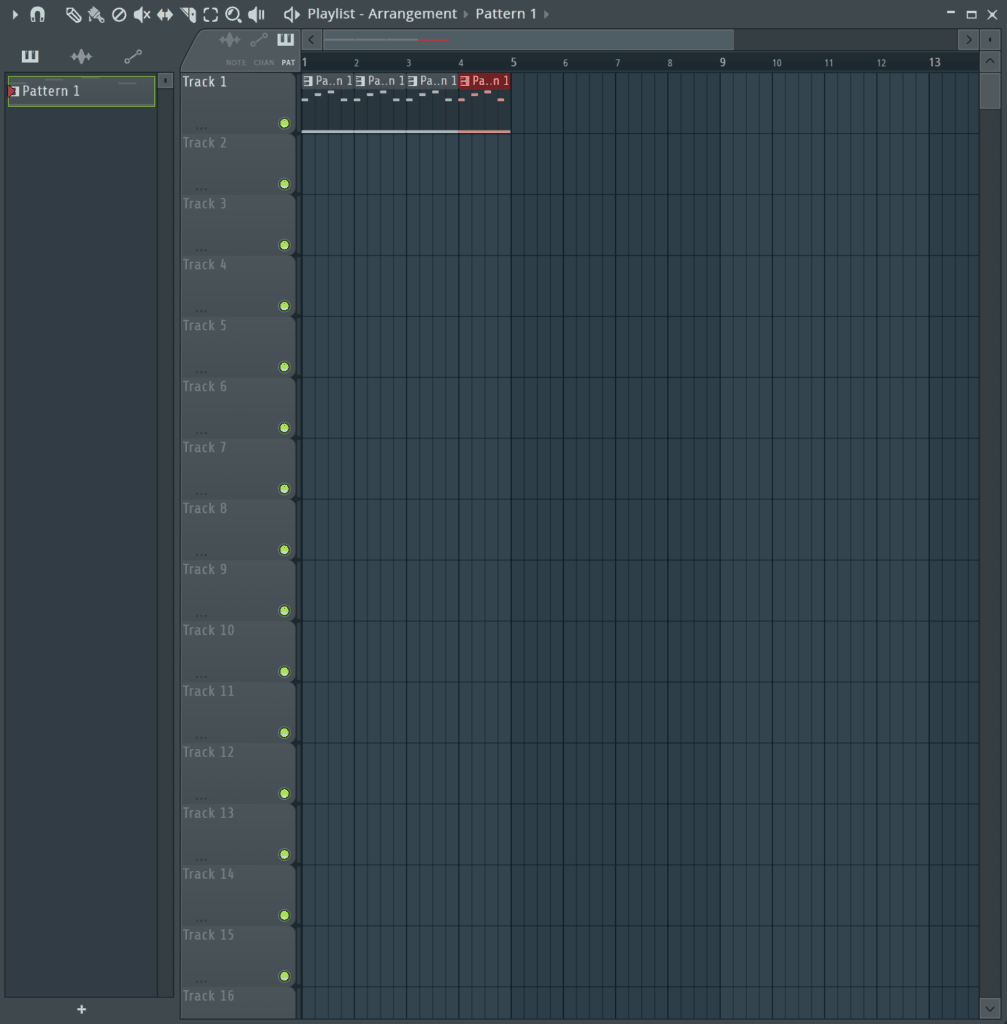
Bringing your sounds and patterns into the context of a total track. That's where things go from an thought to a proper melody.
And then here are some useful tips y'all can kickoff making total songs, faster and more effectively.
Tip 75: Markers
Press Alt + T in gild to add a marker to the system. Y'all tin can set a name for information technology and drag it to the desired location. This can help denote sure sections of your track and assistance structure things.
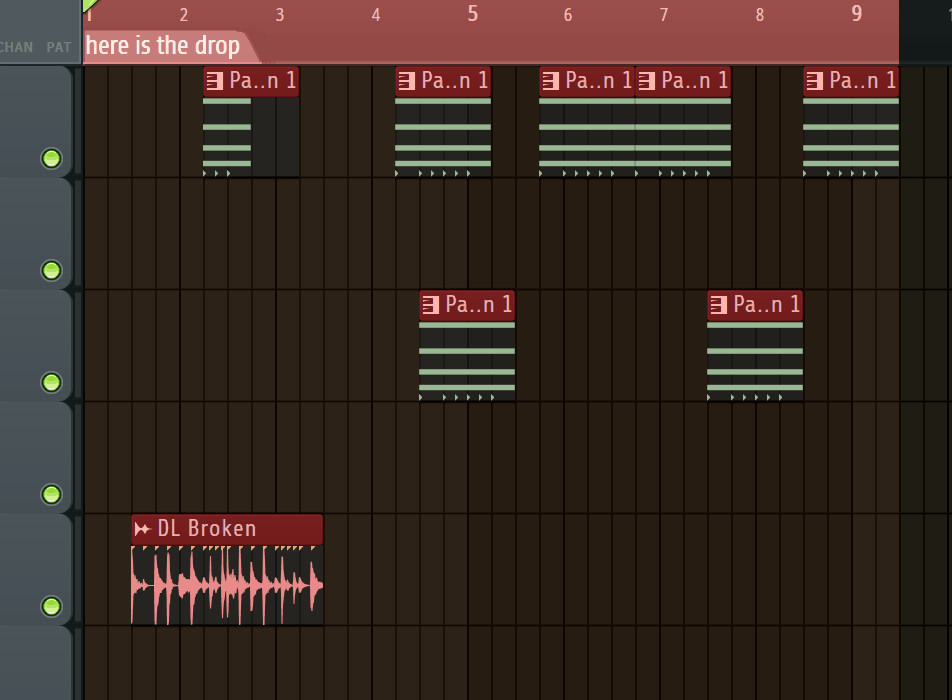
Tip 76: Marker Actions
You can take the previous tip further by right-clicking on the marker and applying an action to information technology, such every bit a time signature modify, a vocal commencement point or a loop/record point.
Tip 77: Slip Tool
If you want to add some timing differences to your patterns, turn on the Slip tool by pressing S or by holding Shift. Then, elevate beyond a pattern to move its contents left or right.
Tip 78: Looping
Double click and drag in the timeline ruler upwards the top to select a segment of time to loop. When pressing Play next, information technology will loop just the selected department. Double click elsewhere to cancel the loop.
Tip 79: Select All Similar Clips
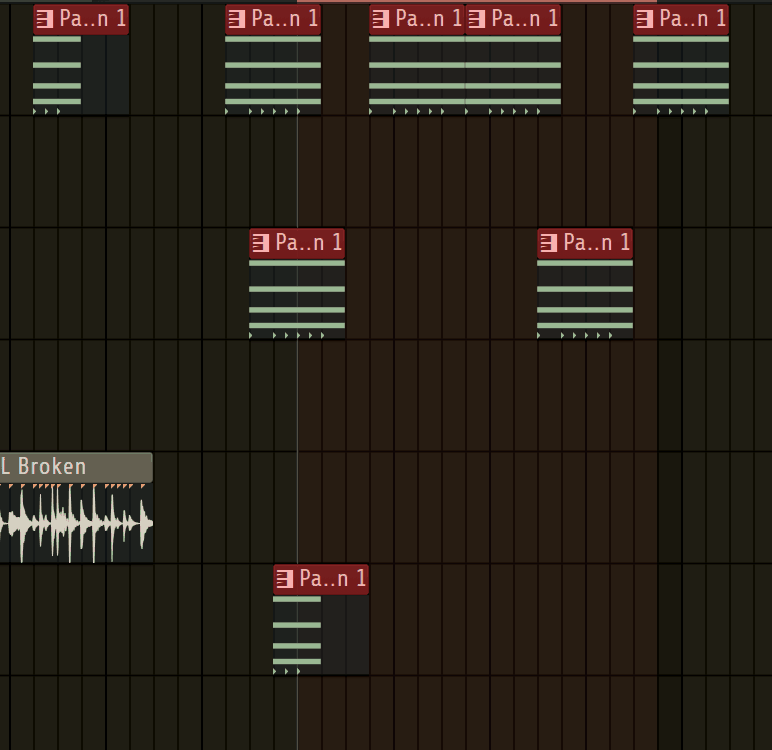
You can select all instances of a pattern in the Playlist by selecting the little piano icon of the pattern in the top left and selecting Select all similar clips. Now you're gratuitous to do with them what you want, all at the same time.
Tip 80: Brand Unique
Make unique creates a new version of an existing clip in the organization. Once once more, click on the piano icon in the meridian left of the clip and select Make unique. Now you'll have a new version that y'all tin can, well, make unique.
Tip 81: Merge Patterns
You tin can quickly merge the patterns on a playlist rail into a new playlist by correct-clicking on the track and selecting Merge blueprint clips. Now you have a new clip you can farther edit in the Channel rack.
Tip 82: Direct Instrument Insertion
You can add a new musical instrument directly into the organization by right-clicking on the track and selecting Track mode > Instrument Track and adding a new instrument.
Tip 83: Picker
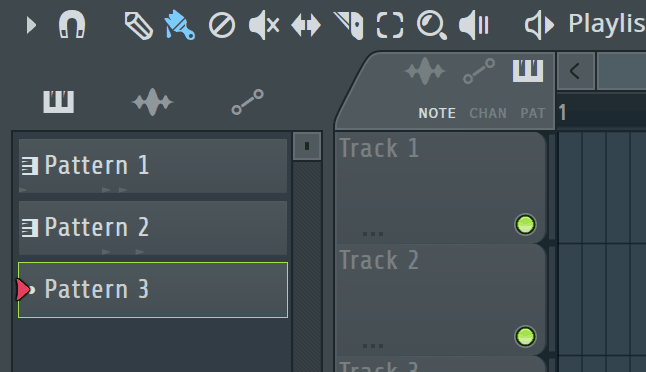
If you come across to the left of the arrangement, there is a listing of the patterns that you can drag in. This is a great way to visualise the patterns and add them intuitively.
You can switch between patterns, automation and sound clips past navigating the icons in a higher place the Picker. You can also toggle the whole Picker on and off by pressing Alt + P.
Tip 84: Track Resizing
A unproblematic but constructive tip – elevate the lines between the tracks to resize each one. Hide the less important ones, emphasize the main ones.
Tip 85: Chop
If you have drums or transient-heavy material in an audio clip, clicking on the top left and selecting Chop volition bring up a multifariousness of options to slice the material into different segments.
The different functions perform differently depending on the material, so play around. It's especially practiced in genres like drum and bass and breaks, where chopping loops is integral to the sound.
Mixer Tips
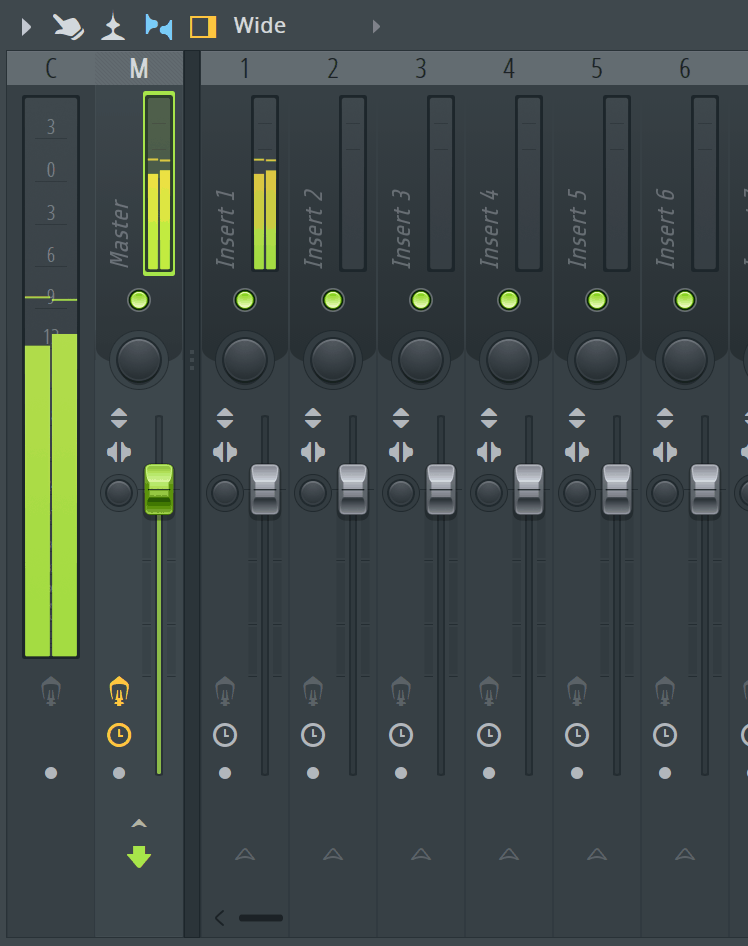
Mixing – the last stage of all good productions. Because it helps to make or break a rail, y'all demand to know how to use this thing.
Here are some of my favourite tips for it.
Tip 86: Linking a Channel
Got a channel selected and want to link it to a mixer channel? Press Cmd (Ctrl) + L to link it to the selected mixer channel instantly, naming it accordingly.
Tip 87: Majority Navigation
Press Downward on your keyboard to navigate through 4 channels at a time on the mixer. Just to speed things upward.
Tip 88: Waveforms
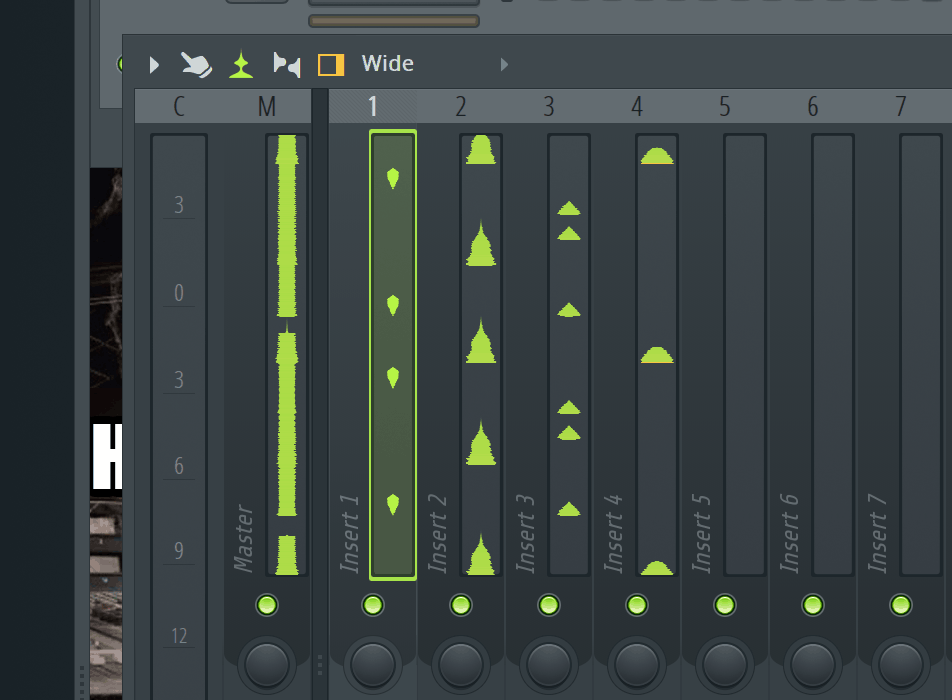
Want to see waveforms for each track rather than the levels? Press Alt + W on your keyboard, or select information technology from the Mixer menu nether View > Waveforms. Yous can also select this at the top of the Mixer – in that location's a little waveform icon.
Tip 89: Mixer Layout Options
Did you know that at that place are 8 options for the mixer layout? To run across them all, select the Mixer layout option at the top of the Mixer (where it says 'Wide) and experiment with the options – see what works best for you.
Tip 90: Built-in EQ
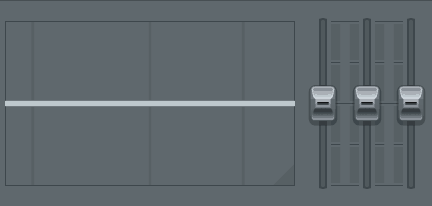
This one is often an overlooked feature of FL Studio'due south mixer. Under the FX inserts for each track, at that place is a 3-band EQ for basic adjustments. This is a great tool for on the fly adjustments and low-CPU tweaking.
Tip 91: Docking Tracks
You lot can dock important tracks in the Mixer to the left or right by right-clicking on the track in question and selecting Dock to > Left/Correct. Great way to visualise what's important.
Tip 92: Separators
On the theme of better visualisation, if you desire to add separators between tracks to visualise certain groups, you tin can right-click on a track and select Separator. Now a thick bar helps to indicate which tracks are related to each other (eastward.grand. drums, synths or FX).
Tip 93: Arranging Mixer Tracks
Use Alt + Left/Right to move mixer tracks effectually.
Tip 94: Quick Edison Loading
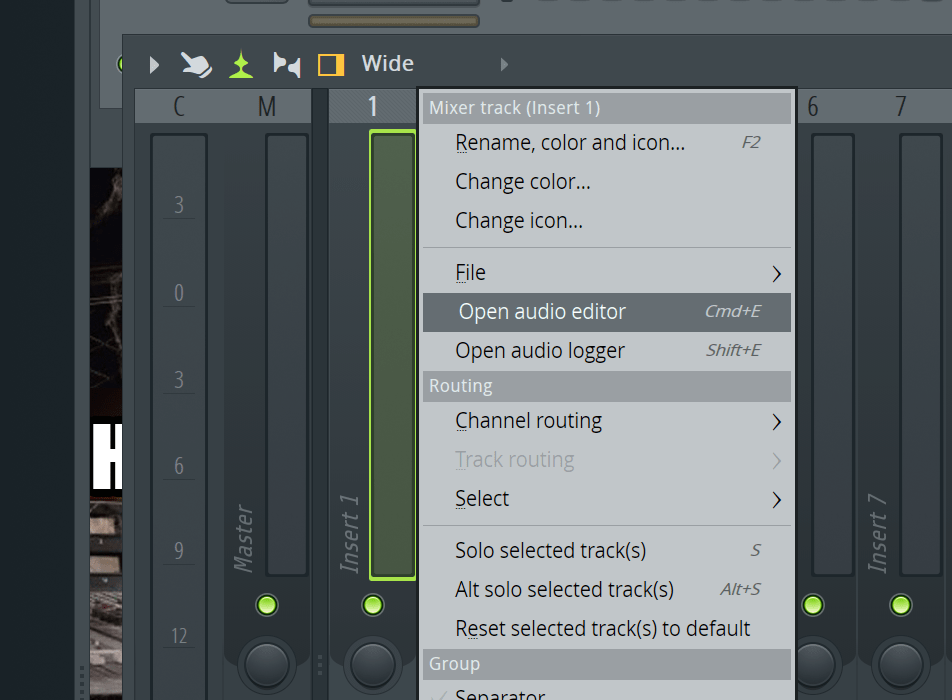
To swiftly add Edison to any track, right-click and choose either Open sound editor or Open audio logger. The quondam opens a default Edison, the latter opens one that starts recording straight away.
Tip 95: Fruity Peak Controller
The Peak Controller is a favourite of many FL veterans. You can map it to the volume of a mixer track and apply it to sidechain other elements.
If yous desire a full tutorial on information technology, cheque this out.
Tip 96: Gross Beat
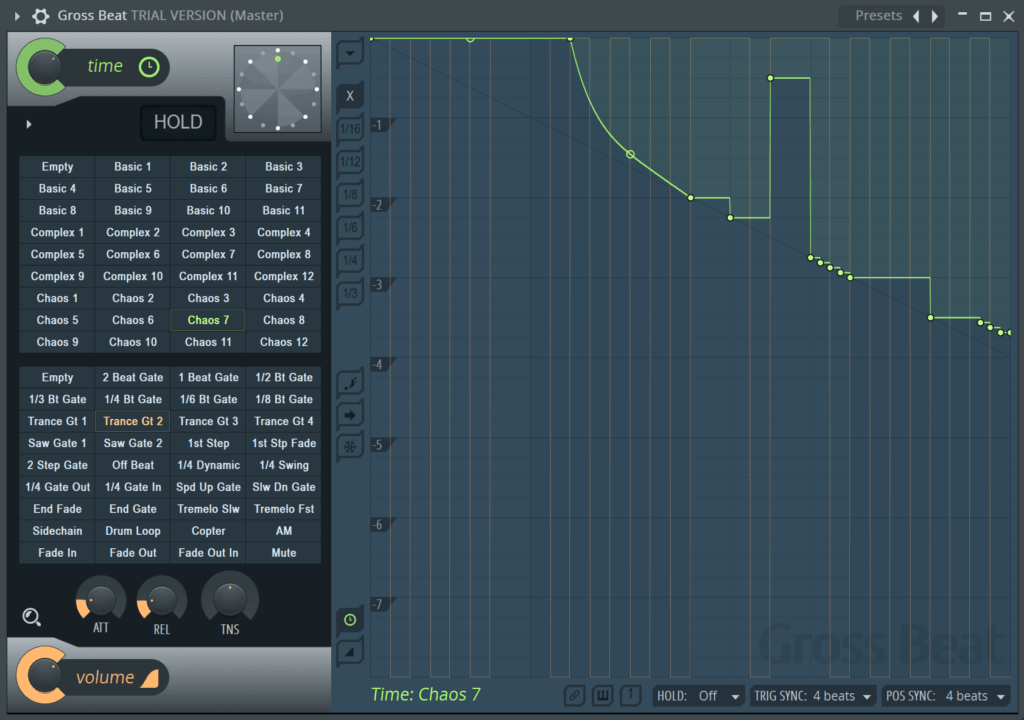
On the theme of sidechain and book adjustments, Gross Trounce is an splendid tool. You can utilize it to modulate both the book and pitch (time) over a sure time frame, like one bar.
Once more, it requires a total tutorial to explain, so bank check this tutorial out.
Tip 97: Use Soundgoodizer
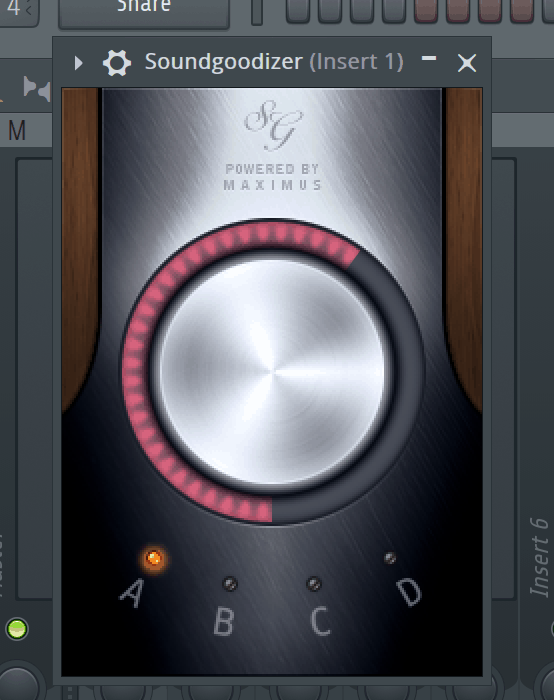
Look, I'll probably cop some hate for this ane. But sometimes, information technology's exactly what you need. As I mentioned in my plugins article, it can be a great tool.
If you lot don't know what I'one thousand talking most, it's a plugin included with FL Studio that applies some multiband compression presets to a audio to assist information technology sound 'fuller'. Just load information technology into a free FX slot, choose from the 4 options, and crank the knob.
Tip 98: Mix Level
If you have an issue loaded into any slot on the aqueduct, you'll detect a knob next to the proper noun. This knob acts as a dry out/wet control for the item plugin, assuasive you to alloy the original (previous) signal with the processed i.
Be warned that depending on the plugin, adjusting this knob tin actually introduce phase bug, then brand sure to heed earlier using and setting it.
Tip 99: Signal Period
Beyond FL Studio, Signal Flow is an of import topic in music production in general, and it is often overlooked past beginners.
Signal Flow refers to the order of processing devices on a sound. So in FL Studio'due south case, it refers to the order of the FX slots.
Thankfully, Paradigm-Line have fabricated it easy to reorder FX. Only hover and scroll over the FX slot and it will movement up and downward. It's the like shooting fish in a barrel.
The Concluding Tip
I bet y'all're wondering what we saved for #100. Well, hither it is.
Tip 100: Nail The Basics
All of the above tips are great, but you might exist wondering how they fit into the overall picture of music production.
Merely to be honest, they won't help you brand good music if you oasis't nailed the basics. How would you practice that?
Past following a structured guide.
That's why Sam has put out a FREE video training for producers to master the fundamentals in less than a calendar month.
Go Instant Admission to the free video training
And that's it! Let me know at [email protected] if I missed annihilation.
Fl Studio How to Make a Sample Stop When Playing It Again
Source: https://www.edmprod.com/100-fl-studio-tips/